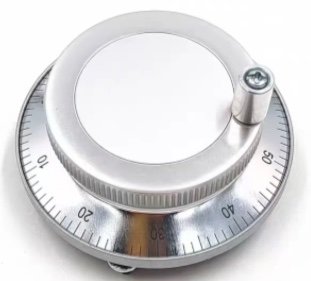slow-poke
Ultra Member
I'm mentioning this because I have found this trick incredibly handy over the years.
When I was a kid my brother gifted me a book called a whack on the side of the head, it's a whimsical book about creativity. That was 50 years back and one suggestion about "opposites" in that book, I continue to use over and over as I find it really helpful. Seems that this group (that enjoys making something from nothing) already has a creative bent so perhaps adding "opposites" to your repertoire will be helpful.
IIRC they said when trying to solve a problem, try to jot down ten different ways to solve the problem, the first two or three usually come easy the remainder can be a struggle, they emphasized don't exclude ideas that seem at second thought to be flawed, you can exclude them later. Just get them on the list because even though that solution might not be viable it may offer a partially viable solution. When concocting your list of ten consider opposites as possible solutions when they say opposites you need to think of that term very loosely.
Recent example, CNC lathe conversion, there are times when you want to use the lathe in a completly manual fashion, except the hand cranks no longer exist. Standard solution is to provide a MPG (Manual Pulse Generator) to create the step pulses to the axis motor, so cranking the MPG emulates cranking the old hand-wheel. Typically MPG looks like this...

So I had two MPGs, one for the carriage and one for the cross slide. I then eliminated the compound because :
1) the machine is stiffer and hence cuts better without that additional joint.
2) with CNC you can emulate whatever angle you want in software by simply sending the appropriate X & Z pulses. So no need for the compound.
New problem(s), where am I going to mount this new MPG for the compound action? And I'm running out of encoder inputs in fact I have used them all up. Hmmm opposites is my friend again instead of adding another MPGs do the opposite and remove one, and instead add a simple switch to select which axis the MPG is used for X, Z or compound.
When I was a kid my brother gifted me a book called a whack on the side of the head, it's a whimsical book about creativity. That was 50 years back and one suggestion about "opposites" in that book, I continue to use over and over as I find it really helpful. Seems that this group (that enjoys making something from nothing) already has a creative bent so perhaps adding "opposites" to your repertoire will be helpful.
IIRC they said when trying to solve a problem, try to jot down ten different ways to solve the problem, the first two or three usually come easy the remainder can be a struggle, they emphasized don't exclude ideas that seem at second thought to be flawed, you can exclude them later. Just get them on the list because even though that solution might not be viable it may offer a partially viable solution. When concocting your list of ten consider opposites as possible solutions when they say opposites you need to think of that term very loosely.
Recent example, CNC lathe conversion, there are times when you want to use the lathe in a completly manual fashion, except the hand cranks no longer exist. Standard solution is to provide a MPG (Manual Pulse Generator) to create the step pulses to the axis motor, so cranking the MPG emulates cranking the old hand-wheel. Typically MPG looks like this...

So I had two MPGs, one for the carriage and one for the cross slide. I then eliminated the compound because :
1) the machine is stiffer and hence cuts better without that additional joint.
2) with CNC you can emulate whatever angle you want in software by simply sending the appropriate X & Z pulses. So no need for the compound.
New problem(s), where am I going to mount this new MPG for the compound action? And I'm running out of encoder inputs in fact I have used them all up. Hmmm opposites is my friend again instead of adding another MPGs do the opposite and remove one, and instead add a simple switch to select which axis the MPG is used for X, Z or compound.
Last edited:


